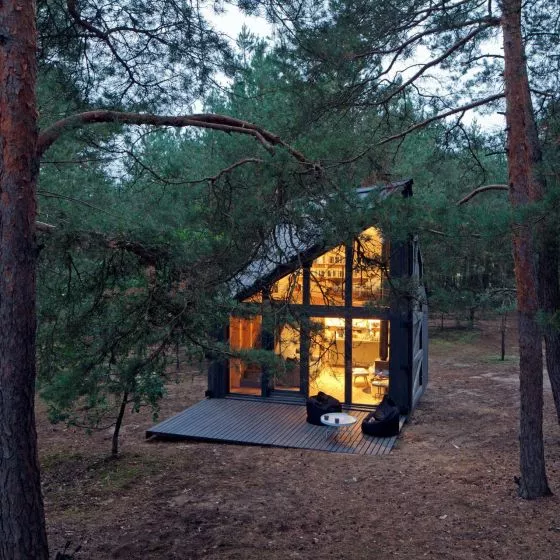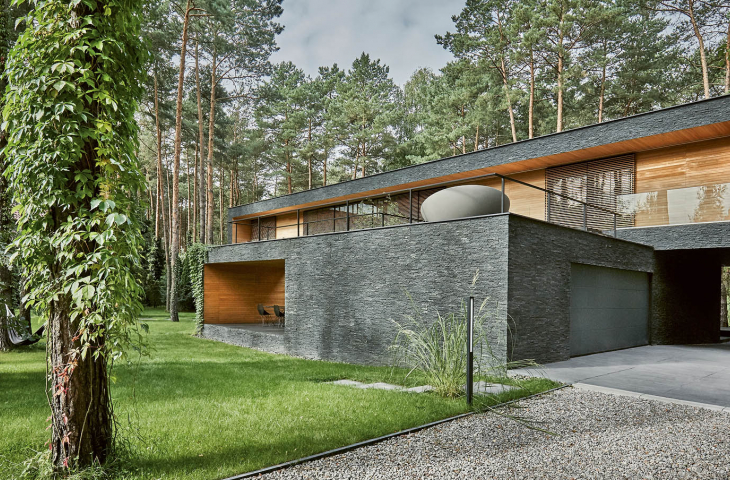Interview with Anna Paszkowska-Grudziąż and Rafał Grudziąż, architects from 81.WAW.PL studio
Architects say with pride: "We are from here. From Poland. From Warsaw. Not in their heads to go to the West. Born in '81, this ideology is hidden in the studio's name. They have been on the market for almost ten years. They dream of designing a high-rise building, but for now their specialty is single-family houses [cf. Dom Polny]. Each personalized, tailored to the needs of future residents. What sets them apart? The fact that they listen to their clients.
Anna Paszkowska-Grudziąż, Rafał Grudziąż
photo: 81.WAW.PL
Katarzyna Jagodzinska: You specialize in residential, single-family construction. Why this choice?
Anna Paszkowska-Grudziąż: This is a choice in its own right. Now we do single-family houses, but in the future we would like to deal with larger buildings. This is the order of things - every young architect starts with interior designs, then, if there are no competition wins along the way, there are single-family houses, and then larger and larger scale. We like that. We wouldn't want to give it up, even when bigger themes come up. Realizing people's dreams is also an amazing thing. But we wouldn't be fulfilled architects if we didn't want to realize something bigger too. We are open-minded, time will tell what we will succeed.
Catherine: So something completely different from what you are doing now.
Rafal: Yes, a different scale.
Anna: I think it's good to go through each scale.
Rafal: We started with furniture. Then we did interiors, then houses, residences, estates. Experience in interior design helps us a lot in designing houses.
Catherine: In your portfolio you have designs of public buildings, participation in competitions, awards.
Anna: Yes, there have been distinctions, however, there has never been a first prize that would open the way to the realization of a larger building. To enter a competition, you have to have a certain budget. Each time it is a few thousand zlotys. This is not only our work, but also the cost of visualization, the cost of other people's work. As we hear from the studios, statistically one in ten entries wins. So far we have participated in very few competitions.
Rafal: And life is life and you have to make money. That's why we now specialize in single-family homes - we realize our clients' dreams. Scale is not important - what is important is the commitment to what we do.
In the overhang there is a sauna; the wall on the north side does not have any window
Photo: Bartek Zaranek © 81.WAW.PL
Catherine: So let's talk about housing. How are trends in this area changing? What and how was building when you started your architectural career, how is it today?
Rafal: Certainly the amount of materials that can be used has changed - there are many more of them.
Anna: For example, just ten years ago quartz sintering was made by two companies, now there are many more of these companies, so prices are more favorable, and thus the material is more available. Our main customers are the thirty and forty plus generation. It seems to me that this is the first generation that is open to a different architecture, more modern, with large glazing. Ten years ago, it was more difficult to get a customer who is open-minded to this type of solution.
Rafal: Not to mention our parents' generation, which prefers traditional architecture and is afraid of modern solutions.
Anna: It's probably going to get easier and easier, because people are traveling more and more, seeing what's being built around the world.
Rafal: It's also much easier to find modern buildings. We have the Internet, there are more and more documentaries on streaming platforms. Investors are watching them and becoming more open to unusual solutions. This is helping. Just a decade ago, the main source for finding good architecture was books and magazines, but now the Internet rules.
Catherine: Forest House just happens to elude the age range of typical clients. Those who ordered represented a slightly older group.
Anna: Such customers are rare. These gentlemen were indeed open to modern architecture, we talked a lot about different materials. I remember that the owner was initially skeptical about the black slate exterior. She was afraid of a black house. We tried to convince her, saying that the wood would be visible inside, while the slate would only be visible when entering the building. We liked each other, and this probably made it easier to work out the design.
The slate, along with the wood, blended well with the forest surroundings - that was the number one argument for choosing this material.
Rafal: They traveled a lot and saw a lot. They were aware that the house didn't have to have a gabled roof and small windows.
Quartzite slate in the form of a mosaic harmonizes perfectly with the bark of the pines
Photo: Bartek Zaranek © 81.WAW.PL































































